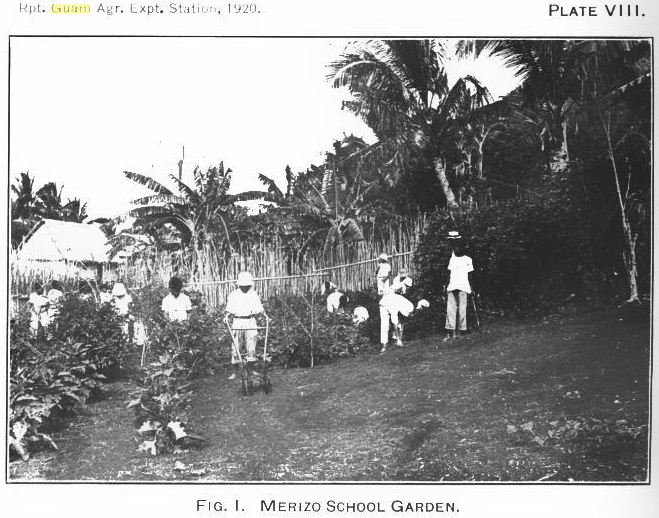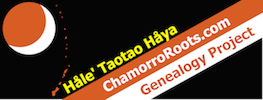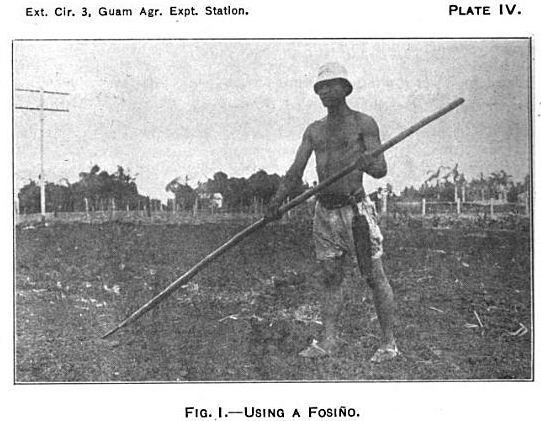PLANTING BY THE MOON AND TIDE: And Superstitions of the Chamorro People
(This article is replicated from The Guam Recorder, December 1926, Volume 3, Number 9. The photos come from old reports from the Guam Agricultural Experiment Station. )

"Science has always scoffed at the "old wives tale" about planting seeds by the moon's phases. Recently according to the Scientific American, Miss E. S. Semmens, an English botanist, showed that the germination of seeds and flowering plants are hastened by the action of polarized light and that moonlight is (partly) that kind of light. "
Perhaps the native planters of Guam, as well as the old-fashioned farmers of other parts of the world, who plant their crops "in the moon" are not so foolish as many believe. They may not understand why they do this, and their explanations may at times be amusing, but experiments seem to have proven that the action of moonlight has some effect upon the germination of seeds and plants.
The native farmer of Guam will tell you that if he plants sweet-potatoes, yams, and other tuber crops at low tide, and full moon, he will receive good returns, in number, but small in size, and if he plants when the tide is high, and the moon is full, his fields will probably not produce so many but the crop will be larger in size and of better quality. When asked why this is, he will explain, that when the tide is low, many rocks and stones are in view on the reef, and plants set out at this time will produce a crop which will cause his fields to be covered with potatoes or other products that grow in the ground, as the reef and beaches are covered with rocks and stones at low tide. Planting is very often done at night when the tide and moon are favorable.
The Chamorro always cuts timber for building purposes, bamboo for the various purposes for which it is used, and coconut leaves for thatching the roof of his house, when the tide is low, and the moon in the first quarter. He will tell you that if this is done when the tide is high, and the moon full, the wood will decay soon, and will become infested with insects. He will explain that when the tide is high and the moon full, the tree contains more sap, at low tide, the wood is dryer and will last longer if cut at this time. He also castrates his animals, bulls, boars etc. and trims the combs of his fighting cocks when the tide is low, and between the last and first quarter of the moon, or in the dark of the moon, and his reason for this is that there will be much less flow of blood at this time. They say this also applies to humans in so far as if one cuts himself when the tide is high the flow of blood will be much more than if the tide is low.
Many of the older natives of Guam object to anyone but themselves touching their fruit trees, they willingly give oranges, lemons and other fruits away, but they want to pick the fruit themselves for they fear that if one not of the family touches the tree something will happen to it , or its bearing qualities will become less. They also believe that certain persons have a good hand for planting, and during the planting seasons these people are very much in demand. They will tell you that those who have a good hand for planting, will have more success, all conditions being equal, excepting the phases of the moon and tide, than those who do plant with the moon and tide.

Coconut oil which is one of the main articles of daily use by the native of Guam, is made in the following manner and by the moon and tide. The coconut is grated, squeezed in the hands, and boiled to extract the oil which is skimmed from the top of the boiling water, but the squeezing and boiling do not take place until the tide is high; if done when the tide is low, it is said that a much less amount of oil will be obtained.


